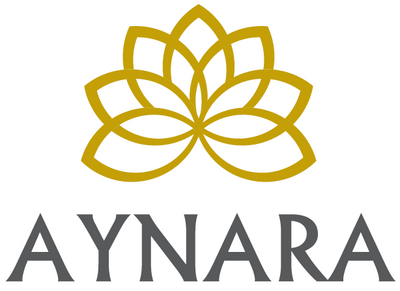Omega 6, also known as linoleic acid, can be found in every supplement aisle and every health magazine. People are encouraged to consume more fatty acids to improve health and prevent heart disease, but the details about omega 6 are usually glossed over. It's tempting to simply dismiss the “omega” craze as just another health fad, but this and other essential fatty acids are necessary for maintaining a healthy body and lifestyle.

But where's the line between hype and reality? If every lifestyle blog is to be believed, omega acids can cure any disease, cancer, or ailment under the sun, and it becomes difficult to tell the difference between fact and exaggeration when a supplement becomes so popular. To help clear things up, we've created a comprehensive guide to understanding and benefiting from the essential fatty acid, omega 6.
What is omega 6 / linoleic acid?
When most people think of the word “acid,” they imagine a corrosive substance. While this type of acid is certainly most famous, acid is simply a type of molecule that creates hydrogen ions when dissolved in water. Some acids can corrode metal, but others are produced naturally inside the body.
Linoleic acid, or omega 6, is one of several “fatty acids” that are comprised of polysaturated fats. The human body can't produce its own omega 6 fatty acids, so it's necessary for people to get these essential acids from their diet or through supplements. When a person doesn't have enough omega 6, it can eventually lead to health problems.
What does omega 6 do for the body?
Omega 6 fatty acids help the body perform a number of basic functions, including
- proper development
- bone growth
- brain function
- maintaining healthy skin and hair
- promoting healthy metabolism
- maintaining the reproductive system
As with all vitamins, minerals, and essential acids, omega 6 works in conjunction with other things to complete all of these functions. Without proper omega 6 levels, all of these aspects of overall health may suffer. But omega 6 / linoleic acid serves several other functions outside the body.

Benefits of Topical Linoleic Acid
Aside from the basic health benefits of consuming the proper amount of linoleic acid, there are numerous ways your skin can be improved by direct application. Omega 6 can be applied to the skin via creams or lotions, or by all natural, plant-based oils such as argan. Directly applied linoleic acid:
- Reduces the appearance of scars – Linoleic acid has been shown to reduce hyper-pigmentation (i.e., scar or sunspots) in the skin, and can even cause scars to fade and blend into the surrounding skin tone.
- Evens skin tone – For the same reason, applying argan oil to patchy or uneven skin will even out skin tone when used consistently.
- Safe skin barrier for premies – A recent study even showed that linoleic acid can form a skin barrier to help premature babies whose epidermal layers have not fully developed.
- Treats and prevents acne – Many people who suffer from acne have low levels of linoleic acid. Massaging natural oils such as argan into the face can safely raise these levels and prevent breakouts.
Omega 6 in Argan Oil
The recent praise for argan oil is well deserved, as it seems to be an almost miraculous cure-all for beauty ailments, and ongoing research is showing it has many more health benefits as well. This is because pure, organic argan oil is packed with high levels of vitamins, essential fatty acids, and other nutrients. Among these are vitamins D and E (which promote healthy skin and hair, as well as elevated mood and decrease inflammation), and oleic and linoleic acids.
Argan as a topical treatment is preferable to commercial moisturizers because there are no unnecessary ingredients. Aynara pure organic argan oil has no fillers or preservatives and delivers all the benefits of linoleic acid with none of the damaging stabilizers or inactive ingredients other products have. Argan is safe to use on the skin, hair, or nails every day, and only requires a few drops at a time.
Using Argan Oil for Linoleic Acid Treatment
Reaping the benefits of omega 6 / linoleic acid by topical application requires nothing more than a bottle of organic argan oil and a few moments.
- To fade scars – apply 1 or more drops of pure, organic argan oil to the scar, rubbing it in gently. Repeat 3 times per week or daily.
- To create an even skin tone – gently massage a few drops of oil into your skin on and around the affected area. Repeat daily, up to twice per day.
- To prevent acne – with clean hands, massage 1 to 2 drops of argan oil on areas prone to acne. If suffering from dry or oily skin, use over the entire face. Repeat each day after showering.

With natural argan oil, the benefits of linoleic acid topical application are enhanced by high levels of vitamins E and D, and by the balancing effect of oleic acid. Despite its use as a moisturizer, the oil won't contribute to oily skin, as it absorbs fully and quickly. And because it contains no harmful additives, it's safe for repeated usage throughout the day.
While a capsule supplement is a good way to increase your dietary intake of essential fatty acids, those suffering from scarred, uneven, dry, oily, or acne-ridden skin shouldn't overlook the advantages of using organic argan oil as a topical linoleic skin treatment. A dietary supplement will eventually contribute to improved skin, but the simplest and most effective way to raise levels of linoleic acid in the skin is to massage it directly into the pores through a gentle medium like argan oil. Particularly in a world that encourages the use of harsh antibacterial soaps, degreasers, astringents, and other skin-damaging chemicals, the benefits of direct application via argan oil can scarcely be overstated.




0 comments